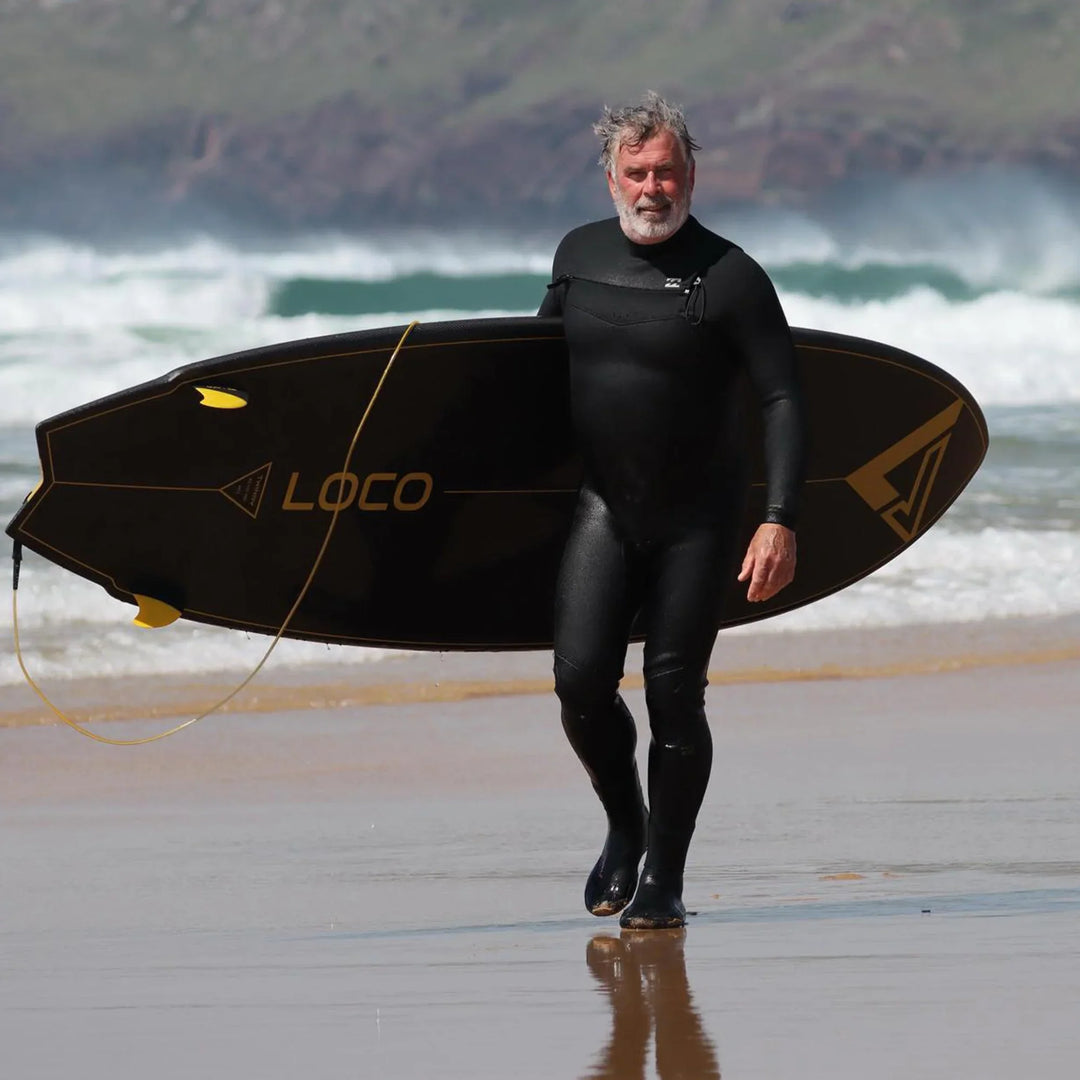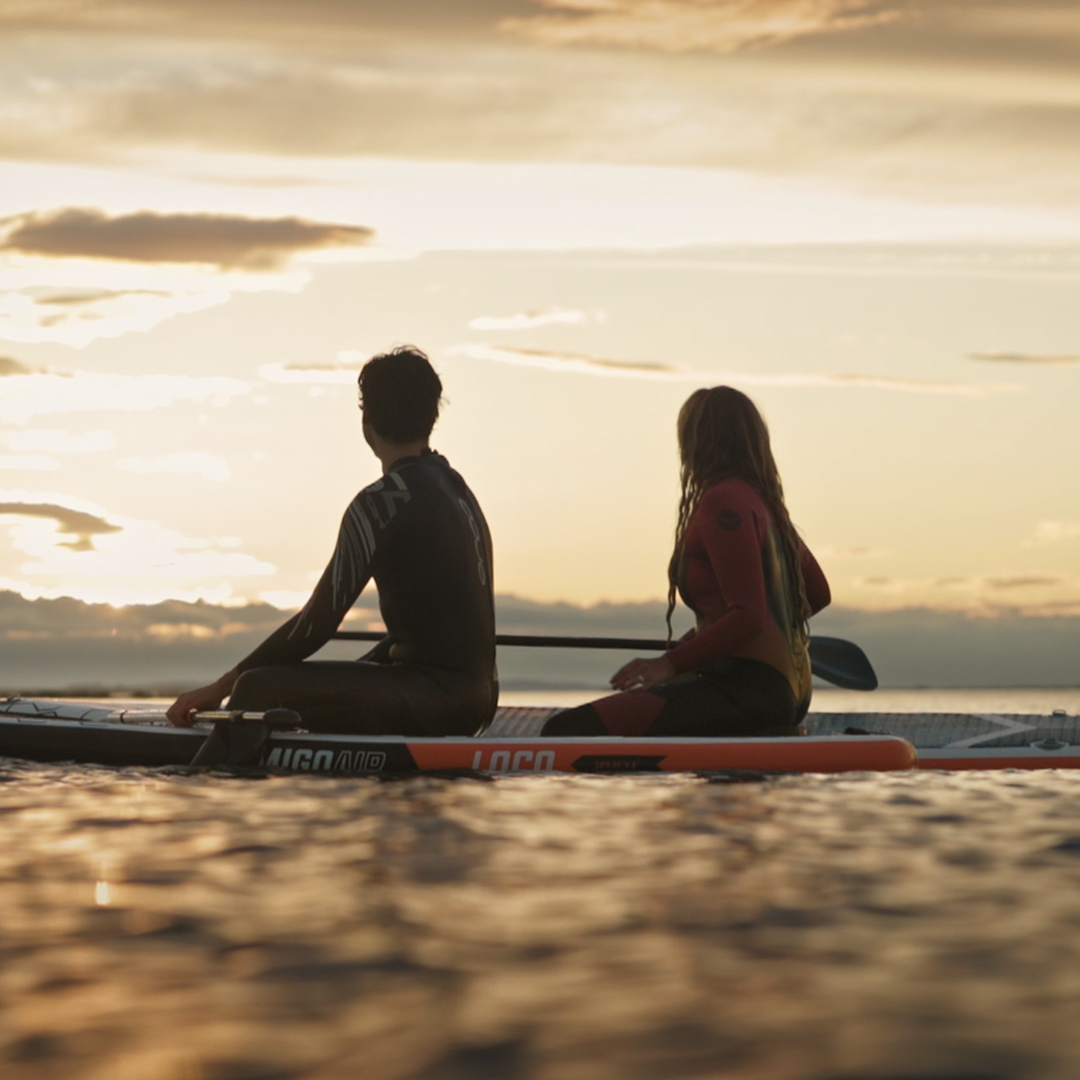Loco SUP – kick ass surfing tips

Loco SUP – kick ass surfing tips - For those looking at getting into SUP surfing for the first time, or for those wanting to improve their existing skills, check out Loco’s 10 kick ass SUP surfing tips.
1) Getting out through white Water – for the complete newbie Loco recommends paddling out prone (lying down) from the shallows. Wait for the set to finish then make a beeline for ‘outback’. If you’re more accomplished, paddle on your knees until you’re in waist deep water, then stand up.
As whitewater approaches you should switch to a surf stance with your weight slightly back and try to bunny hop the board over the flotsam. Keep paddling to maintain speed and move feet back to paddling stance once you’ve cleared the foam.
2) Positioning yourself in Relation to the Waves – for the best results look out to sea and watch the waves coming in. Identify the peak and then try to position your board as close to the shoulder as possible. If you imagine the beach is 12 noon you want the board pointing at 3 if you’re a natural footer, and 9 if you’re goofy.
The action of paddling on the seaward side will turn the board towards the beach as the wave approaches. You should aim for as close to 12 as possible to make the drop trying not to over-rotate. By standing parallel to the waves already in surf stance it’s possible to take off very late as your technique improves.
3) Paddling in Surf Stance – This is a key element to paddle surfing success. You can generate more power in this compact stance and you’ll benefit from not having to change your feet. The further back you stand the quicker the board will pivot. It’s a feeling thing so persevere and you’ll soon reap the benefits.
4) Using the Rail to steer the Board – following on from the surf stance tip, if you weight the rail on the same side as you paddle this will stop the board turning in the opposite direction. It takes a bit of practice and you might feel a bit twisted in the hips but once mastered this makes life a lot easier.
5) Using the Paddle to Engage Turns – the paddle can be used in a variety ways but to get started think about it in terms of a rudder. When you’re about to drop in, position the paddle on the inside of your intended turn, flare up the leading edge so it doesn’t drag and skim it across the water at the same time exerting pressure on the toe side rail to carve a fluid arc.
Loco SUP – kick ass surfing tips - To redirect off the lip change your feet from toe side to heel side and put in a paddle stroke at the top of the wave to reposition the board facing back down the wave. Timing is key and practice makes perfect.
6) Foot placement for top and bottom turns – As touched upon above, the paddle and feet work in unison. If you think about placing your back foot roughly where the fins are then you’ll find the board can turn sharply – depending how much pressure you decide to drive through the fins.
7) Use of Cross stepping to Drop in – When you show up at the beach and the waves look like glassy perfection but when you actually get out there you can’t catch jack, this is normally due to an offshore wind getting under the nose. This is the time to utilise cross stepping.
Paddling into the wave as normal. Position yourself in the ideal spot close to the shoulder, generate some forward momentum as the wave approaches (ideally already in the surf stance) then, as the wave picks you up, keep paddling hard but cross step your feet to the nose to force the board down the face.
As you start to glide, run back to the tail so you can bottom turn. It also helps if you put in a couple of extra paddle strokes just to make sure you don’t get blown off the top of the wave.
8) Avoiding Injuries when you Wipe out – A common problem with newbies hitting the surf with zero or limited experience, is injury.
Know your limits. Going out in 6ft surf on your first session isn’t wise. Wait for a smaller day (1-2ft) with decent spacing between waves.
If you fall off while riding in the shallows try and fall away from the kit, on the wave side, and fall flat to avoid twisted ankles and broken wrists. Keep in mind the power of the wave may drag the board (and you) back to shore by your ankle so be careful that stretching leaches don’t twang the board back into your head. This never ends well so make sure you cover your head with at least one hand.
Try to avoid going ‘over the falls’ (getting pitched forwards). It’s better to fall to the side or off the back, keeping as much room between yourself and your board as possible.
9) Wave Selection – This comes with practice but as you improve and want to push yourself a bit more there’s often an argument for not riding every wave into the beach. There might be a lot of foam to negotiate which means you’ll spend half your time paddling out rather than surfing – so maybe just make a few turns, then hop off the back.
Often it’s better not to take the first wave in a set as the later ones tend to be bigger and better formed. If you wipe out there are also fewer waves to take on the head before you can catch your breath and make it back out to the line-up.
10) Consider other Water Users – when you’re learning your skills aren’t honed so you need to be careful. You’re effectively on a 10-11ft battering ram with a 10-11ft leash, which means your ‘kill zone’ is 20-22ft.
Using your vision to spot potential obstacles and avoid them is a must! You should not be dropping in amongst a busy line-up, hampering prone surf lessons or scaring swimmers in the shallows. Paddlers will note SUPs pick up waves a lot easier than traditional surfboards but this is no reason to take every wave going.
Surfers will soon get very annoyed with you and this can often spill over into arguments!
Dropping in (stealing other riders’ waves) is also a big no no. If there’s someone closer to the pocket (the breaking part of the wave), it’s their wave, so kick out – there will be others.
Joe Thwaites is the owner of Loco SUP and has many years under his belt of coaching a variety of watersports and practising them in his own time. Thanks to Joe for imparting his wealth of knowledge for this feature.
If anyone has any further questions then the Loco team is always on hand to answer your queries about all areas of stand up paddle boarding. Give them a shout and get sectioned with Loco.




